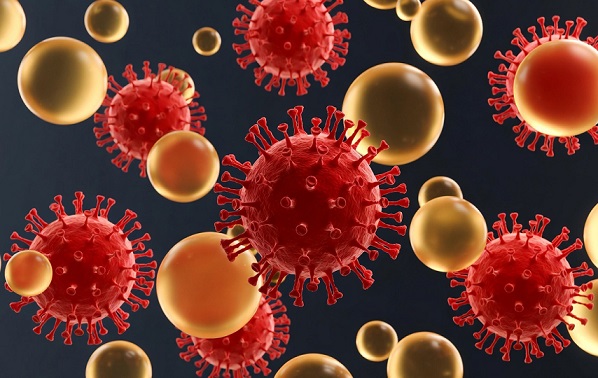Nikhil Prasad Fact checked by:Thailand Medical News Team Nov 23, 2025 53 minutes ago
Medical News: A new study conducted by experts from the Faculty of Medicine of Tunis at the University of Tunis El Manar, the Laboratory of Biochemistry at Rabta Hospital, the Service of Infectious Diseases at Rabta Hospital, and the Department of Infectious Diseases and Tropical Medicine together with the Clinical Research Unit at Hôpital Nord Franche Comté in France has uncovered a hidden biochemical disturbance occurring inside patients with COVID-19. The team discovered that the infection triggers a powerful and harmful lipid storm that strongly influences how sick a patient becomes. These findings deepen our understanding of the body’s reaction to SARS-CoV-2, and this
Medical News report expounds on these new discovered findings.
 A new study reveals that a dangerous lipid storm helps drive severe COVID-19
What the Researchers Studied
A new study reveals that a dangerous lipid storm helps drive severe COVID-19
What the Researchers Studied
The research involved blood samples taken from 134 hospitalized COVID-19 patients and 135 healthy individuals who served as controls. Using highly advanced mass spectrometry techniques, the scientists measured polyunsaturated fatty acids, inflammatory lipid molecules known as oxylipins, and a group of signaling compounds called endocannabinoids. All of these substances play critical roles in regulating inflammation, immune function, and blood clotting.
A Powerful Lipid Storm in COVID-19 Patients
The analysis showed a major surge in multiple lipid groups among COVID-19 patients. Levels of omega-3 fatty acids such as EPA, DPA, and DHA were significantly higher. Even more concerning was the sharp rise in proinflammatory oxylipins, including prostaglandin D2, prostaglandin E2, leukotriene B4, and thromboxane B2. These molecules are known to intensify inflammation and promote clotting. At the same time, the body also produced high amounts of pro-resolving oxylipins like lipoxin A4, resolvin D5, and protectin DX, which are normally meant to help end inflammation. Endocannabinoids such as 2-AG, OEA, EPEA, and DHEA also increased dramatically, signaling activation of another regulatory system linked to inflammatory control.
Why Some Patients Develop Severe COVID-19
When researchers compared mild and severe cases, they found that patients with severe COVID-19 had extremely elevated levels of the strongest inflammatory lipids, especially leukotriene B4 and thromboxane B2. The ratio of inflammatory to anti-inflammatory lipid mediators was also heavily skewed in severe cases. This imbalance suggests that once the lipid storm intensifies beyond a critical point, inflammation becomes uncontrollable, leading to lung injury, widespread clotting, and more dangerous disease.
Conclusions
The study clearly shows that COVID-19 triggers a major lipid storm involving sharply rising fatty acids, inflammatory oxylipins, pro-resolving mediators, and endocannabinoids. When this balance shifts too far toward inflammation, the disease becomes severe and far more damaging. These insights highlight new possibilities for future treatments that target lipid pathways and potentia
lly reduce complications in infected patients. Although more research is needed, this work marks an important step toward understanding and controlling severe COVID-19 through therapies that influence lipid-based immune responses.
The study findings were published in the peer reviewed journal: Microorganisms 2025.
https://www.mdpi.com/2076-2607/13/11/2622
For the latest COVID-19 news keep on logging to Thailand
Medical News.
Read Also:
https://www.thailandmedical.news/articles/coronavirus
https://www.thailandmedical.news/articles/long-covid
